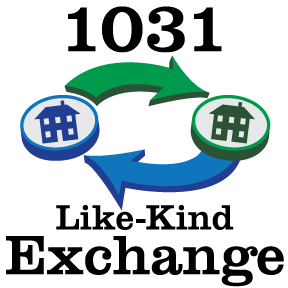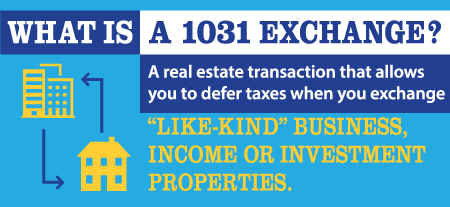Exchange Types
Investors have the ability to structure their exchanges in several ways. Depending on the investor’s situation any of the four exchange types listed below could be a viable option:
1. Simultaneous Exchange
In a simultaneous exchange the relinquished property is sold and the replacement property acquired on the same day, with concurrent closings. The simultaneous exchange is rare and investors should still use an Exchange Accommodator when doing a simultaneous exchange.

2. Delayed Exchange
The most common method of exchanging, the delayed exchange, allows investors to sell a property and then acquire replacement property within 180 days.
3. Reverse Exchange
The reverse exchange allows investors to acquire replacement property prior to selling. The reverse exchange can be more complicated however, as investors can not own both the new replacement property and (soon to be) relinquished property at the same time. Your chosen 1031 Exchange Intermediary, as an Exchange Accommodating Titleholder will need to go on title to one of the two properties involved in the exchange. Investors considering a reverse exchange should contact their Intermediary well in advance (2 weeks) of closing on the replacement property. For more information about the reverse exchange, you can call this Intermediary Asset Exchange Company, 877-471-1031 for a free consultation.
4. Construction/Improvement Exchange
The construction exchange allows investors to use exchange proceeds to build on land or improve an existing property. The construction/improvements exchange is often used to acquire a ‘fixer’ and do improvements on the existing structure. The pitfall with a construction/improvement exchange lies in the fact that all exchange funds need to be spent on or before the 180th day of the exchange.

